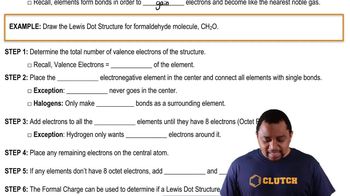Complete and balance the following molecular equations, and then write the net ionic equation for each:
(a) HBr(aq) + Ca(OH)2(aq) →
(b) Cu(OH)2(s) + HClO4(aq) →
(c) Al(OH)3(s) + HNO3(aq) →
 Verified step by step guidance
Verified step by step guidance



Complete and balance the following molecular equations, and then write the net ionic equation for each:
(a) HBr(aq) + Ca(OH)2(aq) →
(b) Cu(OH)2(s) + HClO4(aq) →
(c) Al(OH)3(s) + HNO3(aq) →
Write the balanced molecular and net ionic equations for each of the following neutralization reactions: (a) Aqueous acetic acid is neutralized by aqueous barium hydroxide
Write the balanced molecular and net ionic equations for each of the following neutralization reactions: (c) Aqueous nitric acid and aqueous ammonia react.
Write balanced molecular and net ionic equations for the following reactions, and identify the gas formed in each: (a) solid cadmium sulfide reacts with an aqueous solution of sulfuric acid (b) solid magnesium carbonate reacts with an aqueous solution of perchloric acid.
Because the oxide ion is basic, metal oxides react readily with acids. (a) Write the net ionic equation for the following reaction: FeO(s) + 2 HClO4(aq) → Fe(ClO4)2(aq) + H2O(l) (b) Based on the equation in part (a), write the net ionic equation for the reaction that occurs between NiO(s) and an aqueous solution of nitric acid.